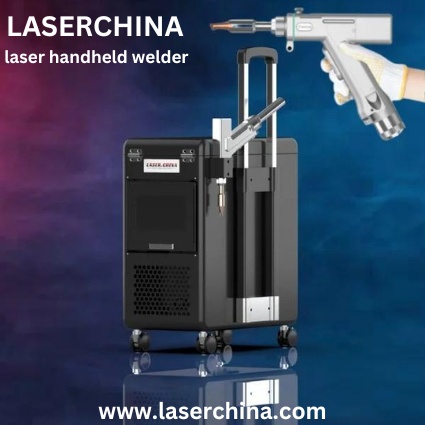In recent years, the welding industry has witnessed a remarkable evolution with the introduction of laser handheld welder. These innovative tools have revolutionized welding processes, offering unprecedented precision, efficiency, and versatility. In this comprehensive guide, we'll delve into the world of laser handheld welder, exploring their functionality, applications, advantages, and tips for optimal use.
Understanding Laser Handheld Welder
Laser handheld welder utilize focused laser beams to join materials together. Unlike traditional welding methods that rely on heat generated from an electrical arc or flame, laser welding harnesses the energy of a highly concentrated beam of light to melt and fuse materials. This precise method enables welders to achieve exceptionally clean and accurate welds with minimal heat-affected zones.
Applications of Handheld Laser Welders
Handheld laser welders find application across various industries, including automotive, aerospace, electronics, jewelry manufacturing, and medical device fabrication. These versatile tools are ideal for welding thin and delicate materials, such as stainless steel, aluminum, titanium, and even plastic components. Whether it's creating intricate jewelry designs, repairing precision instruments, or assembling electronic components, handheld laser welders offer unparalleled precision and control.
Advantages of Handheld Laser Welders
-
Precision: Handheld laser welders allow welders to precisely control the intensity and focus of the laser beam, resulting in accurate welds with minimal distortion.
-
Speed: Laser welding is significantly faster than traditional welding methods, as the focused beam rapidly melts and fuses materials together.
-
Versatility: These portable devices can be used for a wide range of applications and can weld various materials, making them indispensable tools in many industries.
-
Minimal Heat Affected Zone (HAZ): Laser welding produces a small heat-affected zone, reducing the risk of distortion and preserving the integrity of the surrounding material.
-
Non-contact Process: Since laser welding is a non-contact process, there is no need for electrodes or filler material, minimizing the risk of contamination and ensuring clean welds.
Tips for Optimal Use
-
Ensure Proper Safety Precautions: Always wear appropriate safety gear, including laser safety glasses, to protect your eyes from the intense laser beam.
-
Optimize Settings: Experiment with different laser parameters, such as power, pulse duration, and beam diameter, to achieve the desired weld quality.
-
Surface Preparation: Properly clean and prepare the surfaces to be welded to ensure optimal weld quality and bonding.
-
Practice Good Technique: Maintain a steady hand and consistent welding speed to achieve uniform welds with minimal defects.
-
Regular Maintenance: Keep your handheld laser welder clean and well-maintained to ensure optimal performance and longevity.
Conclusion
Handheld laser welders represent a significant advancement in welding technology, offering unparalleled precision, efficiency, and versatility. By understanding their functionality, applications, advantages, and following best practices for optimal use, welders can harness the full potential of these innovative tools to tackle a wide range of welding challenges across various industries. Embrace the future of welding with laser handheld welder, and unlock new possibilities in precision joining.


No comments yet